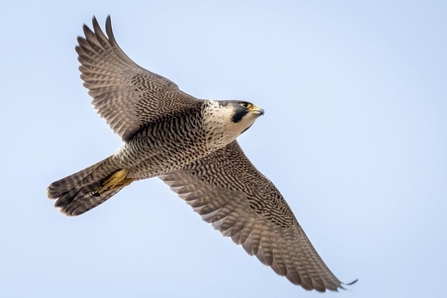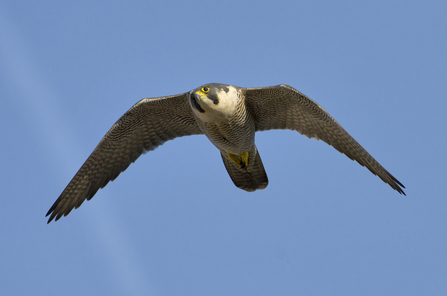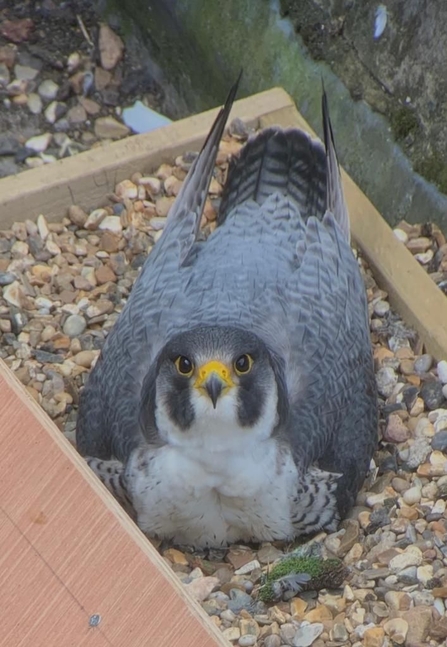In Hertfordshire there are thought to be five breeding pairs of Peregrine Falcons - in St Albans, Watford, Hemel Hempstead, Welwyn Garden City and Wymondley.
Since 2022, a pair have bred high up on St Albans Cathedral and over the last three years seven chicks have successfully fledged the nest - and this year, we have three more to watch!
In 2023, a webcam was set up to provide us with live footage of the birds’ antics on the nest tray and this has given us all some wonderful insights – with over half a million views in 2024 and interest in the birds still growing, it’s great to see how many people have taken them to their hearts! Now, as we wait to see what the future holds for this year's chicks, which hatched between 9-11 June 2025, you can find out all you want to know about these majestic falcons through the questions and answers below:




